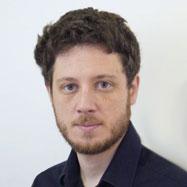Séminaire : Nanostructuration at two scales in III V semiconductors to control both electronic states and photonic states: photonic crystal quantum cascade laser
 04 april At 11h00 – Amphiteather IEMN-LCI Villeneuve d’Ascq
04 april At 11h00 – Amphiteather IEMN-LCI Villeneuve d’Ascq
Dr. Romain Peretti, IEMN
On one hand, periodically repeated change of refractive index at the wavelength scale known as photonic crystal (PhC) affects the motion of photons in much the same way that ionic lattices affect electrons in solids. This means photons now can be depicted by Bloch modes and the well know band diagram to describe their motion in the material. Such PhC when unidimensional can be used for instance as antireflective coating when the 2 dimensional counterpart is used in solar cells or micro laser.
On the other hand, periodically repeated stack of semiconductor multiple quantum well heterostructures allows achieving intersuband transition in III-V semiconductors. This idea was first proposed in R.F. Kazarinov and R.A. Suris in 1971 with in mind the idea of creating a new kind of laser. Such quantum cascade laser (QCL) where then demonstrated by Faist et al. in 1994. QCLs are unipolar and laser emission coming from this intersuband transition. Since then, QCL’s made huge progresses and are now reaching more than one watt of power in the mid infrared range of the spectrum (3- 12µm), at room temperature. Still these high power lasers are multimode and all the designs aiming at single mode operation suffer from additional modes apparition when scaling up the device to reach high power. However, several applications such as military countermeasure, or laser surgeries needs high power single mode operation. Pulled by this demand, we combined QCL and PhC adopting an innovative regrowth approach to enhance even more the thermal dissipation needed by the device.















